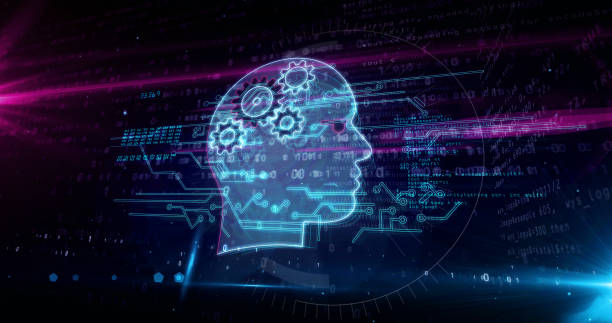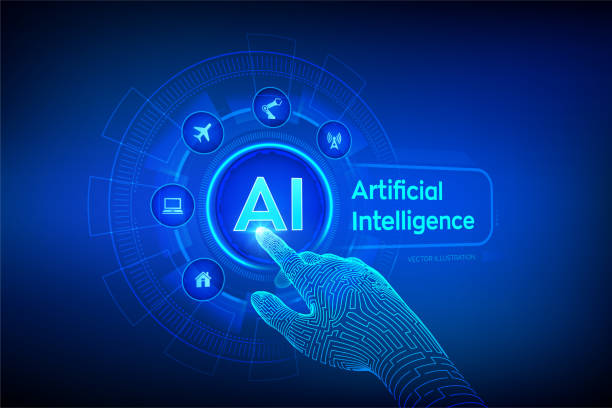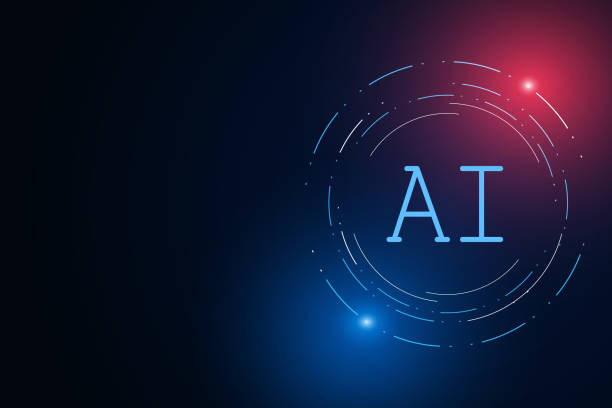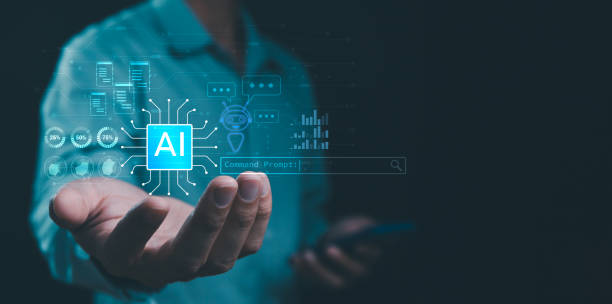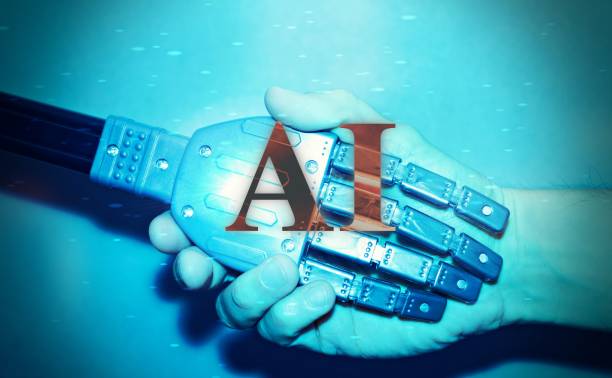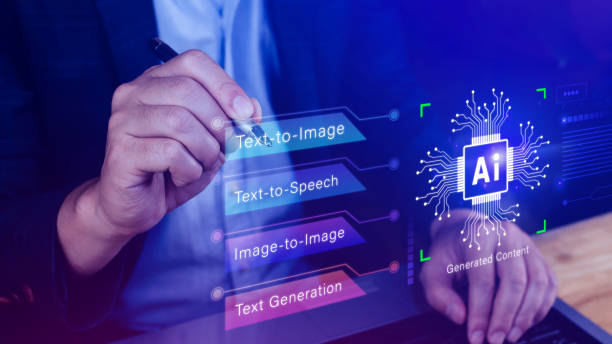What is an AI Robot? Key Definitions and Concepts
What is an AI Robot?
In today’s world, the term #Artificial_Intelligence (AI) is heard with increasing frequency.
But when we talk about an AI robot, what exactly do we mean? Simply put, an AI robot is an intelligent agent capable of performing tasks that typically require human intelligence.
These tasks include learning, reasoning, problem-solving, understanding natural language, and even creativity.
An AI robot is not merely a computer program, but a complex system that uses various algorithms and models to simulate human cognitive processes.
Artificial Intelligence on Wikipedia provides comprehensive information on this topic.
AI robots are widely used in various industries, such as customer service, healthcare, and finance.
These robots can help automate tasks, improve accuracy, and increase efficiency.
Generally, an AI robot refers to any software that can perform tasks that typically require human intelligence, such as natural language understanding, problem-solving, and decision-making.
This can include chatbots, virtual assistants, and other AI-based applications.
How much does losing business leads due to an unprofessional website cost you? Solve this problem forever with professional corporate website design by Rasaweb!
✅ Increase credibility and trust among potential customers
✅ Easier attraction of new business leads
⚡ Get a free consultation now!
Types of AI Robots: Categorization Based on Application and Architecture
Categorization of AI Robot Types
AI robots can be categorized based on various criteria.
A common method is categorization based on their application.
For example, chatbots are designed to interact with customers and answer their questions, while data analysis robots are used to identify patterns and trends in large volumes of data.
Another categorization is based on the architecture and algorithms used in the AI robot.
Some robots use artificial neural networks, while others employ more traditional machine learning algorithms.
Click here to preview your posts with PRO themes ››
AI robots can also be classified based on how they interact with users.
For example, chatbots typically interact with users via text or voice, while virtual assistants can use a wide range of interfaces, including touch interfaces, motion interfaces, and even brain-computer interfaces.
When choosing an AI robot for a specific task, it’s important to consider the particular needs of the task.
For example, if you need an AI robot that can interact with customers in a conversational manner, you should choose a chatbot.
On the other hand, if you need an AI robot that can analyze large volumes of data, you should choose a data analysis bot.
Categories of AI robots include:
- Chatbots
- Virtual Assistants
- Data Analysis Bots
- Process Automation Bots
- Information Retrieval Bots
Amazing Applications of AI Robots in Various Industries
Diverse Applications of AI Robots
AI robots are transforming various industries.
In customer service, they are used to answer frequently asked questions, provide technical support, and resolve customer issues.
In healthcare, AI robots can assist doctors in diagnosing diseases, planning treatments, and even performing complex surgeries.
In the financial industry, these robots are used for fraud detection, risk management, and providing investment advice.
IBM Cloud Learn provides more information on the applications of artificial intelligence.
Below is a table of applications and their respective industries.
AI robots are currently used in a wide range of industries, including:
- Customer Service
- Healthcare
- Finance
- Retail
- Manufacturing
- Transportation
| Industry | Application | Example |
|---|---|---|
| Customer Service | Answering questions, providing support | Chatbots |
| Healthcare | Disease diagnosis, treatment planning | AI-based medical diagnostic systems |
| Finance | Fraud detection, risk management | Anti-fraud systems |
| Retail | Product recommendation, personalized shopping experience | Product recommendation systems |
Challenges and Limitations of AI Robots: Obstacles Ahead
Limitations of AI Robots
Despite significant advancements, AI robots still face numerous challenges and limitations.
One of the most important challenges is the need for large and high-quality training data.
AI robots require a lot of data to learn and perform their tasks, and if this data is incomplete, inaccurate, or inappropriate, the performance of the AI robot is affected.
Another challenge is the ability to understand and interpret natural language.
Although AI robots have made significant progress in this area, they still cannot fully comprehend the complexities and nuances of human language.
AI robots cannot be creative or think outside the box.
They can only perform tasks for which they have been programmed.
This can be a significant limitation, especially in industries that require creativity and innovation.
Furthermore, there are ethical concerns regarding the use of AI robots.
For example, some people are concerned that AI robots might be used to replace human jobs or that they might be used to discriminate against certain groups of people.
It is important to take these concerns seriously and ensure that AI robots are used in a responsible and ethical manner.
Does your current corporate website present a worthy image of your brand and attract new customers?
If not, with Rasaweb’s professional corporate website design services, turn this challenge into an opportunity.
✅ Significantly improves your brand’s credibility and image.
✅ Paves the way for attracting new leads and customers.
⚡ For a free and expert consultation, contact Rasaweb now!
The Future of AI Robots: Predictions and Emerging Trends
The Future of AI Robots
The future of AI robots looks very bright.
With continuous advancements in machine learning, natural language processing, and computer vision, AI robots are expected to be capable of performing more complex and diverse tasks in the future.
One of the emerging trends is the integration of AI robots with the Internet of Things (IoT).
This integration can lead to the creation of smarter systems capable of collecting and analyzing data from their environment and making appropriate decisions based on this data.
More information on the Internet of Things is available on Wikipedia.
AI robots are expected to play a more significant role in our lives in the future.
They can help us with a wide range of tasks, including trip planning, grocery shopping, and even elder care.
However, it is important to remember that AI robots are tools and should be used in a responsible and ethical manner.
How to Build an AI Robot? Step-by-Step to Design and Implementation
Building an AI Robot
Building an AI robot can be a challenging but exciting project.
The first step is to precisely define the purpose and tasks of the AI robot.
You need to specify what your AI robot will do and what problems it will solve.
Next, you need to collect and prepare the necessary training data.
This data must be diverse, high-quality, and relevant to the AI robot‘s tasks.
The next step is to select appropriate algorithms and models.
Depending on the type of tasks and available data, you can use various machine learning algorithms such as neural networks, support vector machines, or decision trees.
Finally, you need to train your AI robot and evaluate its performance.
If necessary, you can adjust the algorithms and models to improve the AI robot‘s performance.
In summary, the main steps for building an AI robot are:
- Defining the purpose and tasks of the AI robot
- Collecting and preparing training data
- Selecting appropriate algorithms and models
- Training and evaluating the performance of the AI robot
- Optimizing and improving performance
Tools and Technologies Required for Developing AI Robots
AI Robot Development Tools
Developing AI robots requires the use of various tools and technologies.
Programming languages like Python and R are widely used for developing machine learning and natural language processing algorithms.
Libraries such as TensorFlow, PyTorch, and Scikit-learn provide a set of tools and functions for building and training machine learning models.
Cloud platforms like AWS, Azure, and Google Cloud offer various services for developing and deploying AI robots.
These services include cloud computing, data storage, and machine learning tools.
The choice of appropriate tools and technologies depends on the specific needs and requirements of the project.
The most important tools and technologies for developing AI robots include:
- Programming languages (Python, R)
- Machine learning libraries (TensorFlow, PyTorch, Scikit-learn)
- Cloud platforms (AWS, Azure, Google Cloud)
- Natural language processing tools (NLTK, SpaCy)
- Computer vision tools (OpenCV)
| Tool | Description | Application |
|---|---|---|
| Python | Widely used programming language | Development of machine learning algorithms |
| TensorFlow | Open-source machine learning library | Building and training machine learning models |
| AWS | Cloud platform | Providing services for development and deployment of AI robots |
| NLTK | Natural language processing tool | Analysis and understanding of natural language |
Ethical Considerations in Designing and Using AI Robots
Ethical Considerations in Using AI Robots
As AI robots become more pervasive in our lives, ethical considerations regarding their design and use become more important.
One of the most crucial considerations is ensuring non-discrimination in AI robot algorithms.
Algorithms should be designed to prevent discrimination against specific groups of people.
Another consideration is protecting user privacy.
AI robots often have access to users’ personal data, and it must be ensured that this data is managed securely and responsibly.
Furthermore, transparency regarding the operation of AI robots is important, and users should be able to understand how AI robots make decisions.
Harvard AI Ethics is a good resource for more information on AI ethics.
In summary, key ethical considerations in the design and use of AI robots include:
- Non-discrimination
- Privacy protection
- Transparency
- Accountability
- Security
Did you know that 85% of customers check your company’s website before any interaction?
With Rasaweb, build a corporate website that befits your reputation.
✅ Increase customer credibility and trust
✅ Attract high-quality leads
⚡ Get a free website design consultation
Case Study: Examining Successes and Failures of AI Robot Projects
AI Robot Case Study
Examining successful and unsuccessful AI robot projects can provide valuable lessons for developers and users.
One successful project is Amazon’s product recommendation system.
This system uses machine learning algorithms to analyze user purchasing behavior and provide personalized recommendations.
One unsuccessful project was Microsoft’s AI robot Tay.
This AI robot was launched on Twitter and quickly began posting offensive and racist tweets.
The project failed due to insufficient control over the content generated by the AI robot.
Reviewing these projects shows that careful design, high-quality training data, and continuous monitoring are essential for the success of AI robot projects.
Other examples of case studies:
- Success: Facebook’s facial recognition system
- Failure: Google Glass project (due to privacy concerns)
Getting Started with AI Robots: Educational Resources and Online Courses
AI Robot Educational Resources
If you are interested in learning more about AI robots, numerous educational resources and online courses are available.
Platforms like Coursera, edX, and Udacity offer comprehensive courses in machine learning, natural language processing, and computer vision.
Websites such as Towards Data Science and Medium publish useful articles and tutorials on various AI robot topics.
Additionally, many books on machine learning and artificial intelligence can help you gain a deeper understanding of these concepts.
By utilizing these educational resources, you can acquire the knowledge and skills necessary to develop and use AI robots.
Some popular educational resources include:
- Coursera (Machine Learning and AI courses)
- edX (AI courses)
- Udacity (Nanodegree in AI)
- The book “Introduction to Machine Learning with Python” by Andreas Müller and Sarah Guido
Frequently Asked Questions
| Question | Answer |
|---|---|
| What is an AI robot? | It is a robot that uses artificial intelligence capabilities to understand its environment, reason, learn, and make decisions to perform complex tasks autonomously. |
| What is the main difference between a regular robot and an AI robot? | AI robots can learn and adapt to their environment, whereas regular robots typically operate based on fixed, predetermined programming. |
| In what areas are AI robots used? | In fields such as industry (production lines), medicine (robotic surgeries), services (customer support, smart vacuum cleaners), exploration (space and underwater), and entertainment. |
| How do AI robots learn? | They acquire new skills by analyzing large data sets and identifying patterns through Machine Learning and Deep Learning algorithms. |
| Can AI robots have emotions? | Currently, no. They can recognize or simulate emotions, but they do not experience genuine emotions like humans do. |
| What are the main advantages of using AI robots? | Increased productivity, reduction of human error, performance of dangerous or repetitive tasks, and provision of innovative and efficient services. |
| What challenges exist in the development of AI robots? | The need for abundant and high-quality data, algorithmic complexity, ethical issues, cybersecurity, and high research and development costs. |
| Are AI robots dangerous to humans? | With adherence to safe design principles and ethical regulations, no. Concerns are more related to social and economic impacts, such as changes in the job market. |
| What is an example of an AI robot in daily life? | Smart vacuum cleaner robots (like Roomba) that autonomously map and clean homes, or smart voice assistants (like Siri and Alexa). |
| How is the future of AI robots predicted? | They are expected to become smarter, more autonomous, and capable of more complex interactions with humans, playing a more prominent role in industry, medicine, transportation, and daily life. |
And other services of Rasaweb Advertising Agency in the field of advertising
Smart Direct Marketing: A combination of creativity and technology for campaign management through custom programming.
Smart Marketing Automation: A fast and efficient solution for improving SEO ranking with a focus on marketing automation.
Smart Advertising Campaign: Designed for businesses seeking user engagement through user experience customization.
Smart Digital Advertising: A blend of creativity and technology for analyzing customer behavior through custom programming.
Smart Sales Automation: A fast and efficient solution for online growth with a focus on marketing automation.
And over hundreds of other services in the field of online advertising, advertising consultation, and organizational solutions
Internet Advertising | Advertising Strategy | Advertorial
Sources
Everything About AI Robots, Applications of AI and its Future in Iran, Impact of AI on Daily Life, Complete Guide to AI Robots
📍 At Rasaweb Afarin Digital Marketing Agency, your online dream turns into reality! We bring your business to the pinnacle of success by offering services such as custom website design, professional SEO, and social media management. Contact us today for a free consultation and build your digital future.
📍 Tehran, Mirdamad Street, next to Bank Markazi, Kazerun Jonubi Alley, Ramin Alley, No. 6

